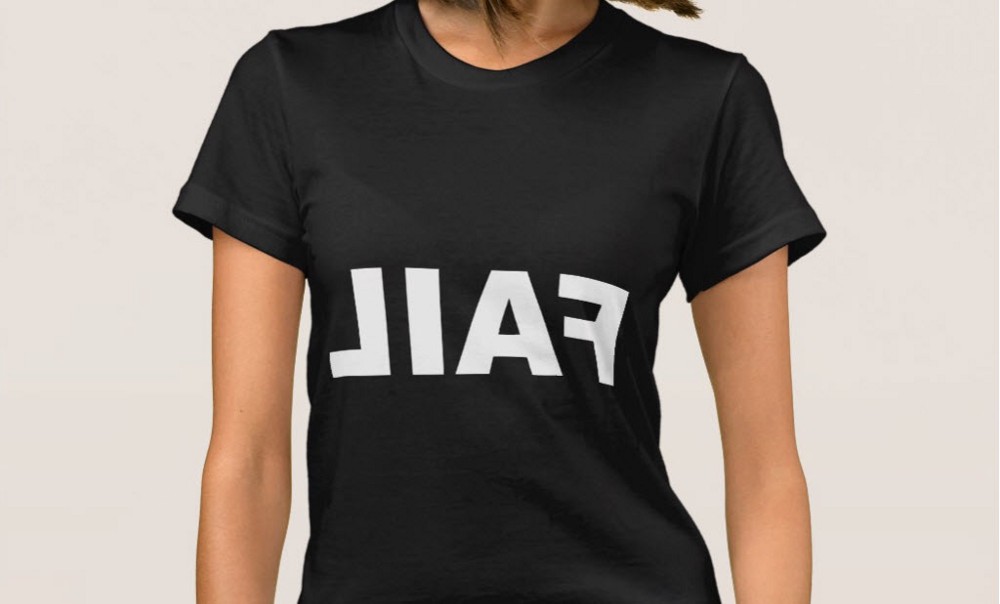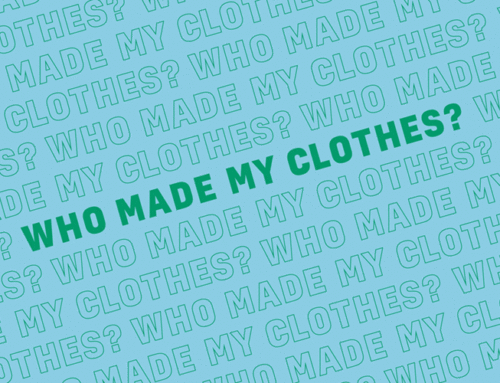We have a problem. Our clothes are failing us.
This might seem a little dramatic — but really, stop and think about it. Since the advent of globalization, the allure of slicing costs by outsourcing work to foreign countries has become the norm. It has expanded our borders, made us more aware of the world, and it has multiplied the resources available to us. However, it’s not all good. Globalization has made the very clothes we wear work against us and not for us. They don’t last, they don’t fit, and it’s time something changed!
The US has single-sourced itself into a corner — there is almost no diversity in our supply chain for clothing, shoes and accessories. Some consumers can hold up every item of clothing they own and see “Made in China” tags only.
This is not a slam on China. It’s not the country of origin that is the problem, but it’s the low sartorial quality of the garments produced there that fill our closet — the clothes that OUR USA COMPANIES ordered and specified to be quickly made and cheaply produced. Mass quantities of clothing hit our shores every minute of every day, with a nearly equal amount being thrown into the charity bin or trash heap when our purchases disappoint us.
With the increase in mass-produced clothing, the fashion industry is giving up the opportunity to really make women feel good about themselves and about their personal style. Fast fashion and even high-end clothes don’t fit the way they should, have you noticed? I personally hate to shop anymore — it’s too frustrating to comb through racks of items that just aren’t right. I’ve talked to dozens of women who are experiencing the same.
It might be because our clothes are being created by people with completely different body sizes and shapes than the average American woman. Add to that the lack of standardization in sizing that varies drastically from brand to brand (and even item to item — partially because of lax standards of manufacturing and consistency). The fast-fashion items that are dominating the retail market aren’t made for curvy, older, or taller women. Size generalizations minimize the complexity of the female body and, at the end of the day they don’t represent the consumer.

The deep irony of women’s clothing sizing is that while men have always specified their clothing by exact measurements (neck size, inseam, waist), women— whose bodies are so complex and variable — have only been issued ONE size number with which to shop (e.g. size 10; or worse, only small/med/large as options). It’s a ridiculous standard that is not based in any kind of data or reality. No one female has the exact same measurements and needs when it comes to clothes that we put on daily.
We’ve been told that we’re too sensitive to be confronted with our actual waist size when we shop, and that we prefer to just see a tiny number instead of something as shocking as a 30-inch waist label. I call bullsh*t on that.
Women’s real needs and problem areas are all but ignored in fashion today. It’s quite possible to venture into the mall and realize that there may not be ANY store that carries clothing you can wear. And if you happen to find a few garments that are to your liking, odds are it will be ruined after a few washes. Simon Collins, dean of fashion at Parsons, spoke on this during an interview with NPR. “You see some products and it’s just garbage. It’s just crap,” he says. “And you sort of fold it up and you think, yeah, you’re going to wear it Saturday night to your party — and then it’s literally going to fall apart.” Why has it become nearly impossible to find clothes that are made well, fit right, and of decent quality?
Take Robin for instance, a 32 year old young professional in New York city working in fashion. She is a style conscious consumer with an average sized body, but faces difficulty when shopping because of her larger chest area. “I have a small frame with a larger chest and find it often difficult to find pieces that work for this body type. It amazes me how many designers do not design for women with large busts — there are so many of us!” she complained recently.
Ada is a 56 year old mom in the Atlanta area who juggles a career and four kids. She also has problems with finding clothing that is fashionable, fits her curves, and is age appropriate. “All the cute clothes aren’t made for women with my shape. I have a large bottom and chest, with a smaller waist. Shopping can be so difficult sometimes.”

These stories of frustration are all too familiar. I’m sure any woman reading this can relate to some degree! The industry isn’t working with our bodies and this has created a common need amongst women. It’s the need for clothing tailored to our unique and ever-changing bodies. It’s clothes that will stand the test of time and hug our bodies in the right areas as well.
The global stage presents both the problem and the solution to our modern-day clothing woes. The solution, I believe, is custom tailored clothing. In the US, custom clothing is considered to be too costly for the average consumer to buy regularly. But it wasn’t always that way — we could definitely bring back sewing skills in America, but it will take years to train the workforce and the economics of labor may not work here. In the meantime, there is so much potential overseas. A dressmaker is a common occurrence in countries all over the world who have not forgotten how to make high quality custom garments.
Ada, who is from Nigeria, reflects on having many custom pieces created for her over the years in her home country, for very reasonable prices. “People go to the tailor and get their measurements taken for garments that are worn for important events like weddings, funerals, birthdays, and more. It is very common.” In Nigeria and various countries around the world, the market for custom clothing has always been an integral part of the culture. There is a lesson to be learned from countries where there is a value placed on clothing that fits, and the expectation of investing in a relationship with a seamstress or dressmaker.
My fledgling startup Balodana will fulfill this gap in the US fashion market. The goal is to bring the role of the dressmaker back to the center of modern dress, and to build relationships between women and talented people who care enough to help them look their best. It strives to connect clothing designers from Europe and around the world to the American woman, to make fantastic bespoke clothing for no more than what you’d pay at a better department store.
In my mind, technology can connect you to people that can make your clothes work FOR you, regardless of where either of you live. There’s an expanding market for tailor-made items and garments (see Modcloth, Etsy and the like), but it doesn’t seem particularly scalable yet, and the user experience itself is still not fully up to my expectation. I think that if we can centralize some of the basics of the customer experience such as measurements and 3D body profiles, and also support the manufacturing side of things with better technology to “solve” for an individual body shape, there’s an amazing shift that will emerge.

I hope you’ll support me on this journey as I figure out how to build a tech company around an industry I only know as a consumer. I can’t sew a stitch myself, but I’ve been really encouraged by those of you who have taken the time to introduce me to people who can help me understand the ins and outs. I have a trip planned in September to visit Romania and Moldova, two countries known for their high quality fashions and European style. I’m meeting with two local manufacturers to see what it would take to do “bespoke at scale”.
I’ll keep you posted on what I find there! Please keep your suggestions and introductions coming, too. I need all the help I can get to find a solution for us all!



